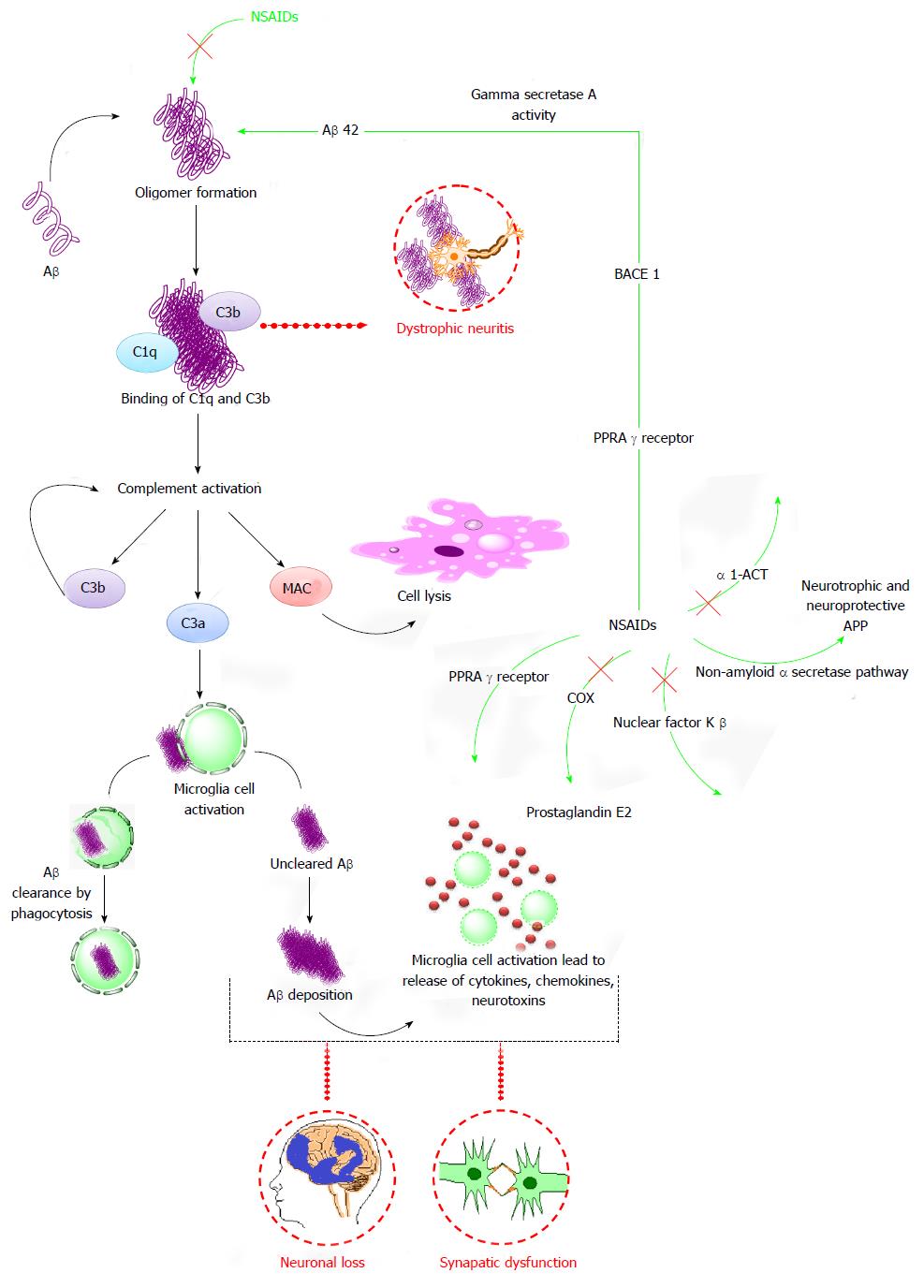Copyright
©The Author(s) 2015.
World J Pharmacol. Sep 9, 2015; 4(3): 236-264
Published online Sep 9, 2015. doi: 10.5497/wjp.v4.i3.236
Published online Sep 9, 2015. doi: 10.5497/wjp.v4.i3.236
Figure 5 Diagram representation elaborating various mechanistic pathways by which anti-Alzheimer’s disease activity is executed by non-steroidal anti-inflammatory drugs.
The aggregation and deposition of Aβ plaques provoke the activation of microglia, astrocytes and complement system (C1q, C3b, C3a, MAC, cytokines and chemokines). The Aβ plaques which evades the clearance process forms deposit and provokes microglial cell activation and release of cytokines, chemokines and neurotoxins which consequently results in neuronal loss and synaptic dysfunction. NSAIDs are reported to act by multiple ways to elicit anti-AD activity which includes suppresion of oligomer formation, PPRAγ, COX, NFKβ, α1-ACT and non-amyloid α secretase pathway. Aβ: Amyloid β; APP: Amyloid precursor protein; MAC: Membrane attack complex; PPARγ: Peroxisome proliferator-activated receptor-γ; COX: Cycloxygenase; α1-ACT: α1-antichymotrypsin; BACE1: Beta-secretase 1.
- Citation: Desai P, Shete H, Adnaik R, Disouza J, Patravale V. Therapeutic targets and delivery challenges for Alzheimer’s disease. World J Pharmacol 2015; 4(3): 236-264
- URL: https://www.wjgnet.com/2220-3192/full/v4/i3/236.htm
- DOI: https://dx.doi.org/10.5497/wjp.v4.i3.236









